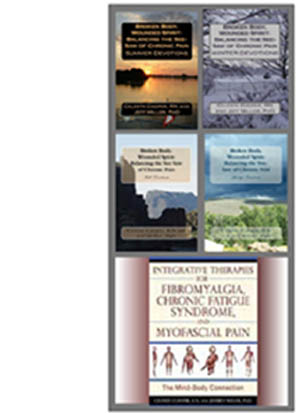It’s efficacy in treating fibromyalgia pain gets mixed reviews.
My concern is the side effects. Neurontin® (gabapentin) functions therapeutically by blocking new excitatory synapse formation in the brain, (Cell), therefore, it could make brain fog worse. The target of any medication should be improve function, and in our case relieve pain and improve cognition so that we can participate in therapy, and interact with others. Many complain of a disconnection with reality when using Neurontin®, I am not sure this is considered improving function.
“You know you have brain fog when you walk back into the same room 5 times and still can't remember what you are doing there, but have that nagging sensation there’s a reason, and you do it several times a day, everyday.”Since fibromyalgia has been related to central nervous system hypersensitivity, and a centralization effect also occurs in ME/CFS, it makes sense that a drug affecting the brain might help with blocking pain impulses. Fibromyalgia is aggravated by a common co-existing condition called myofascial pain syndrome (MPS), AKA chronic myofascial pain (CMP). This neurological imitator, could also explain some of the myalgias in ME/CFS. The associated neuralgia (nerve pain) is due to the presence of myofascial trigger points. Myofascial therapies and body work is the only thing that will affect a myofascial trigger point. This might help explain why Neurontin® is not as effective for treating pain in some patients.
Because impaired cognition and altered proprioception can be present in both FM and ME/CFS there are some red flags. Concern for impaired reasoning and risk of injury should be considered. Both postural orthostatic tachycardia (POTS) and nuerally mediated hypotension (NMH) are mediated in the brain, and since Neurontin ® crosses the blood brain barrier it is possible it could exacerbate these syndromes.
Improved function is the goal of all therapies and medications. if you are not seeing improvement, see a trained therapist that follows the teachings of Dr. Janet Travell and Dr. David Simons and report any dizziness, feelings of disconnection, worsening in ability to reason, word finding, sudden drops in blood pressure, or palpitations to your doctor. We don’t always have the “usual” side effects.
This blog is based on my answer to “How does Neurontin work to treat fibromyalgia pain?” As Fibromyalgia expert at Sharecare.com
Profile http://sharecare.com/user/celeste-Cooper
All blogs, posts and answers are based on the work in Integrative Therapies for Fibromyalgia, Chronic Fatigue Syndrome, and Myofascial Pain: The Mind-Body Connection by Celeste Cooper, RN, and Jeff Miller, PhD. 2010, Vermont: Healing Arts press are for educational purposes and not meant to replace medical advice. www.TheseThree.com
Resources:
Bou-Holaigah I, Calkins H, Flynn JA, Tunin C, Chang HC, Kan JS, Rowe PC. Provocation of hypotension and pain during upright tilt table testing in adults with fibromyalgia. Clin Exp Rheumatol. 1997 May-Jun;15(3):239-46.
Eroglu C, Allen NJ, Susman MW, O'Rourke NA, Park CY, Ozkan E, Chakraborty C, Mulinyawe SB, Annis DS, Huberman AD, Green EM, Lawler J, Dolmetsch R, Garcia KC, Smith SJ, Luo ZD, Rosenthal A, Mosher DF, Barres BA. Gabapentin receptor alpha2delta-1 is a neuronal thrombospondin receptor responsible for excitatory CNS synaptogenesis. Cell. 2009 Oct 16;139(2):380-92. Epub 2009 Oct 8.
Galland BC, Jackson PM, Sayers RM, Taylor BJ.A matched case control study of orthostatic intolerance in children/adolescents with chronic fatigue syndrome. Pediatr Res. 2008 Feb;63(2):196-202.
Ge HY, Wang Y, Danneskiold-Samsøe B, Graven-Nielsen T, Arendt-Nielsen L. The predetermined sites of examination for tender points in fibromyalgia syndrome are frequently associated with myofascial trigger points. J Pain. 2010 Jul;11(7):644-51. Epub 2009 Nov 14.
Giamberardino MA, Affaitati G, Fabrizio A, Costantini R. Effects of Treatment of Myofascial Trigger Points on the Pain of Fibromyalgia. Curr Pain Headache Rep. 2011 May 5. [Epub ahead of print]
Staud R, Craggs J G, Perlstein W M, Robinson M E, and Price, DD, “Brain activity associated with slow temporal summation of C-fiber evoked pain in fibromyalgia patients and healthy controls,” European Journal of Pain (March
Hubbard JE. Myofascial Trigger Points: What Physicians Should Know about these Neurological Imitators. Minn Med. 2010 May;93(5):42-5.2008).
Ocon AJ, Messer Z, Medow M, Stewart J. Increasing orthostatic stress impairs neurocognitive functioning in Chronic Fatigue Syndrome with Postural Tachycardia Syndrome. Clin Sci (Lond). 2011 Sep 15. [Epub ahead of print]
Staud R. Autonomic dysfunction in fibromyalgia syndrome: postural orthostatic tachycardia. Curr Rheumatol Rep. 2008 Dec;10(6):463-6.











No comments:
Post a Comment